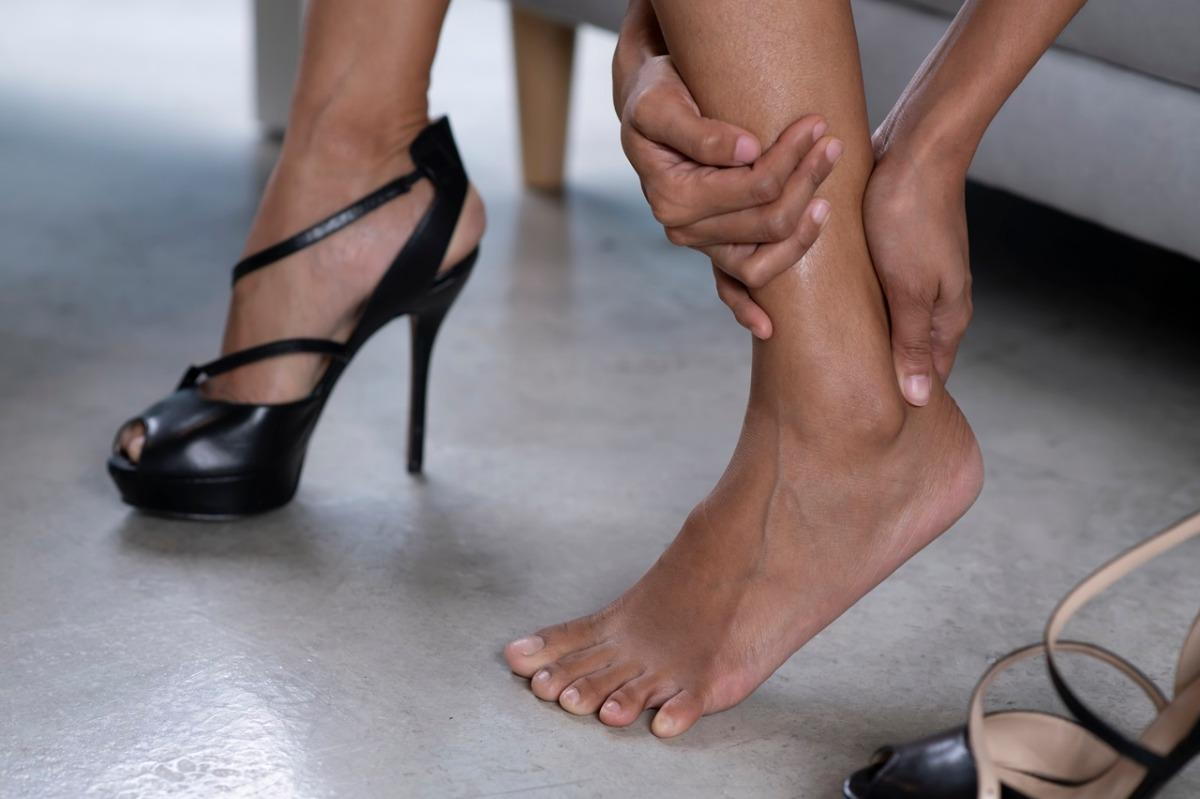Step Away from Heel Pain: A Podiatrist’s Guide to Relief and Recovery
posted: Jul. 03, 2024.

Heel pain isn't just uncomfortable—it can be utterly disruptive, making every step a challenge. Many of us ignore the initial discomfort until it becomes unbearable. However, understanding and addressing heel pain promptly can prevent further complications and speed up recovery. At our clinic, we see numerous cases of heel pain each year, ranging from mild annoyances to severe discomfort, and we’re passionate about providing both relief and solutions.
In the complex structure of the foot, the heel plays a critical role, bearing much of the body's weight with each step. When pain develops, it not only affects the heel but can also alter the overall mechanics of walking, leading to additional stress on other parts of the leg and even the back. Hence, recognizing the signs early and adopting effective management strategies is key to maintaining foot health.
Our approach is holistic, focusing not only on alleviating symptoms but also on preventing future issues. This guide offers a comprehensive look into the common causes of heel pain and practical steps you can take daily to minimize discomfort. Additionally, we’ll explore professional treatments that provide longer-term solutions for those suffering from persistent heel pain. Join us as we step towards a pain-free life, empowering you with knowledge and care.
Identifying Common Causes of Heel Pain
Heel pain can stem from various factors, and identifying these triggers is the first step towards effective management. The two most frequent culprits are plantar fasciitis and Achilles tendinitis. Plantar fasciitis involves inflammation of the plantar fascia, the thick band of tissue running along the bottom of your foot. It causes a sharp, stabbing pain, particularly felt during the first steps after waking up or after prolonged periods of rest. On the other hand, Achilles tendinitis affects the Achilles tendon, the band connecting your calf muscles to your heel bone. It typically manifests as pain and stiffness along the back of the heel, intensifying with activity.
Other common causes include heel spurs, which are abnormal growths of bone on the heel, and excessive pronation, where the foot rolls inward excessively when walking. Understanding the specific nature of your heel pain is crucial in selecting the appropriate treatment and preventative measures. By recognizing these signs early, you can take proactive steps to mitigate severe discomfort and improve your mobility.
Daily Practices to Reduce Heel Pain
Incorporating simple daily habits can significantly alleviate heel pain and enhance overall foot health. Firstly, choosing the right footwear is crucial. Opt for shoes that provide adequate support, cushioning, and a comfortable fit; this is essential not only for those already suffering from heel pain but also for prevention. Shoes with a slightly raised heel, for instance, can reduce stress on the Achilles tendon and provide relief for tendinitis.
Alongside proper footwear, maintaining a healthy weight can reduce the excessive load on your heels with each step you take. This minimization of pressure is instrumental in preventing and managing heel pain. Additionally, regular stretching exercises can be particularly beneficial. Focus on stretches that target the Achilles tendon, calf muscles, and the plantar fascia. These not only alleviate current pain but also aid in prevention.
Good foot hygiene and care, like keeping your feet clean and dry, and avoiding walking barefoot on hard surfaces, also play important roles in reducing the risk of heel pain. Implementing these daily practices can help you manage symptoms effectively and improve your quality of life.
Home Remedies and Exercises for Heel Pain Relief
When you suffer from heel pain, simple home solutions can be incredibly effective for relief. Regular application of ice for 15-20 minutes several times a day can help reduce inflammation and alleviate pain. Additionally, self-massage or using a foam roller along the arch and heel area can help loosen the tissues and decrease discomfort.
Regular exercises aimed at stretching and strengthening the foot can also play a crucial role in managing heel pain. Exercises such as calf stretches, plantar fascia stretches, and towel curls improve flexibility and strength in your feet. Another beneficial exercise is the wall push-up, which targets the heel and arch tissues, promoting flexibility and relief. Integrating these exercises into your daily routine not only helps reduce current pain but also prevents future episodes.
Professional Solutions Available at Sheldon Nadal D.P.M
For those experiencing persistent heel pain, professional treatment options are available that can provide more comprehensive relief. We offer a range of advanced therapies tailored to each individual's specific needs. One such treatment is custom orthotics, which are specially designed to support and correct the unique structure of your feet, distributing pressure more evenly and reducing stress on the heels.
In more severe cases, therapies like extracorporeal shock wave therapy (ESWT) may be recommended. This non-invasive procedure uses shock waves to stimulate healing in damaged tissues. Another effective treatment we offer is corticosteroid injections, which can provide rapid relief from inflammation and pain when other methods have not been successful.
Taking the Next Step Towards Healing
Heel pain doesn't have to be a part of your daily life. You can manage and often alleviate much of this discomfort by understanding its causes, implementing preventive practices, and using effective home remedies. However, when pain persists, seeking professional advice is crucial. Consulting with a podiatrist can offer you access to specialized treatments that go beyond temporary relief and address the root causes of your heel pain.
If heel pain is impacting your daily activities, don't wait for it to worsen. Contact us at Sheldon Nadal D.P.M to schedule an appointment with our Toronto foot specialist. With our expertise and commitment to personalized care, we are dedicated to helping you achieve pain-free movement and improving your overall foot health. Let us guide you back to comfort and mobility.